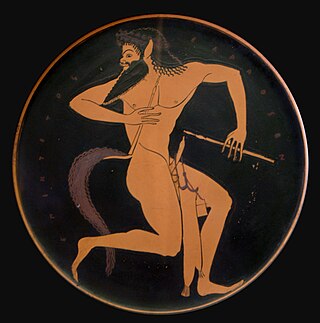
In Greek mythology, a satyr, also known as a silenus or silenos, and sileni (plural), is a male nature spirit with ears and a tail resembling those of a horse, as well as a permanent, exaggerated erection. Early artistic representations sometimes include horse-like legs, but, by the sixth century BC, they were more often represented with human legs. Comically hideous, they have mane-like hair, bestial faces, and snub noses and they always are shown naked. Satyrs were characterized by their ribaldry and were known as lovers of wine, music, dancing, and women. They were companions of the god Dionysus and were believed to inhabit remote locales, such as woodlands, mountains, and pastures. They often attempted to seduce or rape nymphs and mortal women alike, usually with little success. They are sometimes shown masturbating or engaging in bestiality.

The European dragon is a legendary creature in folklore and mythology among the overlapping cultures of Europe.
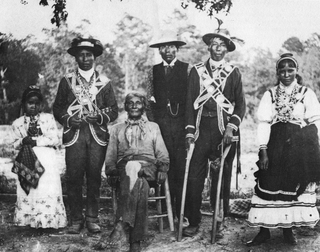
Choctaw mythology is part of the culture of the Choctaw, a Native American tribe originally occupying a large territory in the present-day Southeastern United States: much of the states of Mississippi, Alabama, and Louisiana. In the 19th century, the Choctaw were known to European Americans as one of the "Five Civilized Tribes" even though controversy surrounds their removal.

Tigra is a superhero appearing in American comic books published by Marvel Comics. Created by writer-editor Roy Thomas and artist Wally Wood, with her early adventures written by Linda Fite, the character first appeared as the superpowered and gadget-wielding crime fighter the Cat in The Claws of the Cat #1. She first appeared as Tigra in Giant-Size Creatures #1, by writer Tony Isabella and artist Don Perlin.

The Cegua, La Sihuehuet or Siguanaba, Cigua or Siguanaba is a supernatural character from Central American folklore, though it can also be heard in Mexico. It is a shapeshifting spirit that typically takes the form of an attractive, long haired woman seen from behind. She lures men away into danger before revealing her face to be that of a horse or, alternatively, a skull.
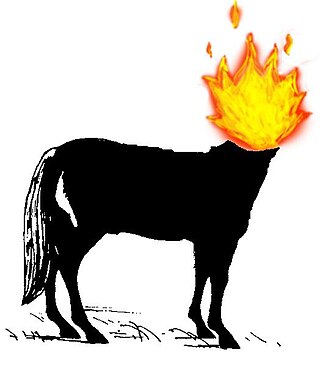
The Headless Mule is a mythical character in Brazilian folklore.

Brazilian mythology is the subset of Brazilian folklore, with cultural elements of diverse origin found in Brazil, comprising folk tales, traditions, characters and beliefs regarding places, people, and entities. The category was originally restricted to indigenous elements, but has been extended to include:

The Patasola or "single leg" is one of many legends in Colombian folklore about female monsters from the jungle, appearing to male hunters or loggers in the middle of the wilderness when they think about women. The Patasola appears in the form of a beautiful seductive woman, often in the likeness of a loved one, who lures a man away from his companions deep into the jungle. There, the Patasola reveals her true, hideous appearance as a one-legged creature with ferocious vampire-like lust for human flesh and blood, attacking and devouring the flesh or sucking the blood of her victims.
The Tunda is a myth of the Pacific coastal region of Colombia and Ecuador, and particularly in the Afro-Colombian community of the Chocó department, about a shapeshifting entity resembling a human woman that lures people into the forests and keeps them there.
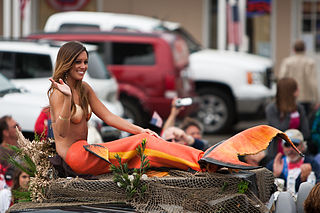
Mermaids, like many other creatures of mythology and folklore, are regularly depicted in literature, film, music, and popular culture. In the folklore of some modern cultures, the concept of the siren has been assimilated to that of the mermaid. For example, the French word for mermaid is sirène, Italian sirena, and similarly in certain other European languages. This usage existed by the Middle Ages.

An ala or hala is a female mythological creature recorded in the folklore of Bulgarians, Macedonians, and Serbs. Ale are considered demons of bad weather whose main purpose is to lead hail-producing thunderclouds in the direction of fields, vineyards, or orchards to destroy the crops, or loot and take them away. Extremely voracious, ale particularly like to eat children, though their gluttony is not limited to Earth. It is believed they sometimes try devouring the Sun or the Moon, causing eclipses, and that it would mean the end of the world should they succeed. When people encounter an ala, their mental or physical health, or even life, are in peril; however, her favor can be gained by approaching her with respect and trust. Being in a good relationship with an ala is very beneficial, because she makes her favorites rich and saves their lives in times of trouble.

Colombian folklore are beliefs, customs and cultural traditions in Colombia.
Inca mythology is the universe of legends and collective memory of the Inca civilization, which took place in the current territories of Colombia, Ecuador, Peru, Bolivia, Chile, and Argentina, incorporating in the first instance, systematically, the territories of the central highlands of Peru to the north.
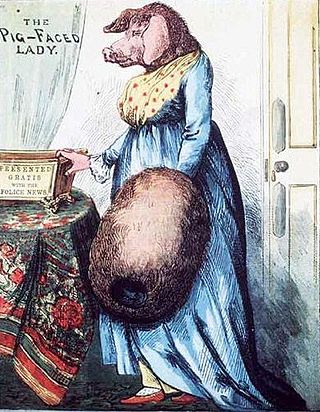
Legends featuring pig-faced women originated roughly simultaneously in The Netherlands, England and France in the late 1630s. The stories tell of a wealthy woman whose body is of normal human appearance, but whose face is that of a pig.

Hispania is the national personification of Spain.
The Serer creation myth is the traditional creation myth of the Serer people of Senegal, the Gambia and Mauritania. Many Serers who adhere to the tenets of the Serer religion believe these narratives to be sacred. Some aspects of Serer religious and Ndut traditions are included in the narratives contained herein but are not limited to them.
Talamancan mythology includes the traditional beliefs of the Bribri and Cabécar peoples, two groups of indigenous peoples in Costa Rica living in the Talamanca region. These peoples speak two different but closely related languages, and from a cultural point of view, constitute a single community. With some exceptions, they share the same religious beliefs, the same stories, the same ritual songs, etc.

Maria Josep Colomer i Luque, better known as Mari Pepa Colomer, was one of the pioneers of Spanish aviation. She was the first female flight instructor in Spain and the first Catalan woman to earn a pilot's license.
Las barbas de plata is a Spanish fairy tale from Cádiz, published by Spanish scholars Julio Camarena and Maxime Chevalier. It is about the marriage between a human maiden and the Devil disguised as a suitor, but a talking mule rescues the maiden to another kingdom, where she marries a human prince. Spanish and Portuguese scholars locate similar tales in Iberian Peninsula.














